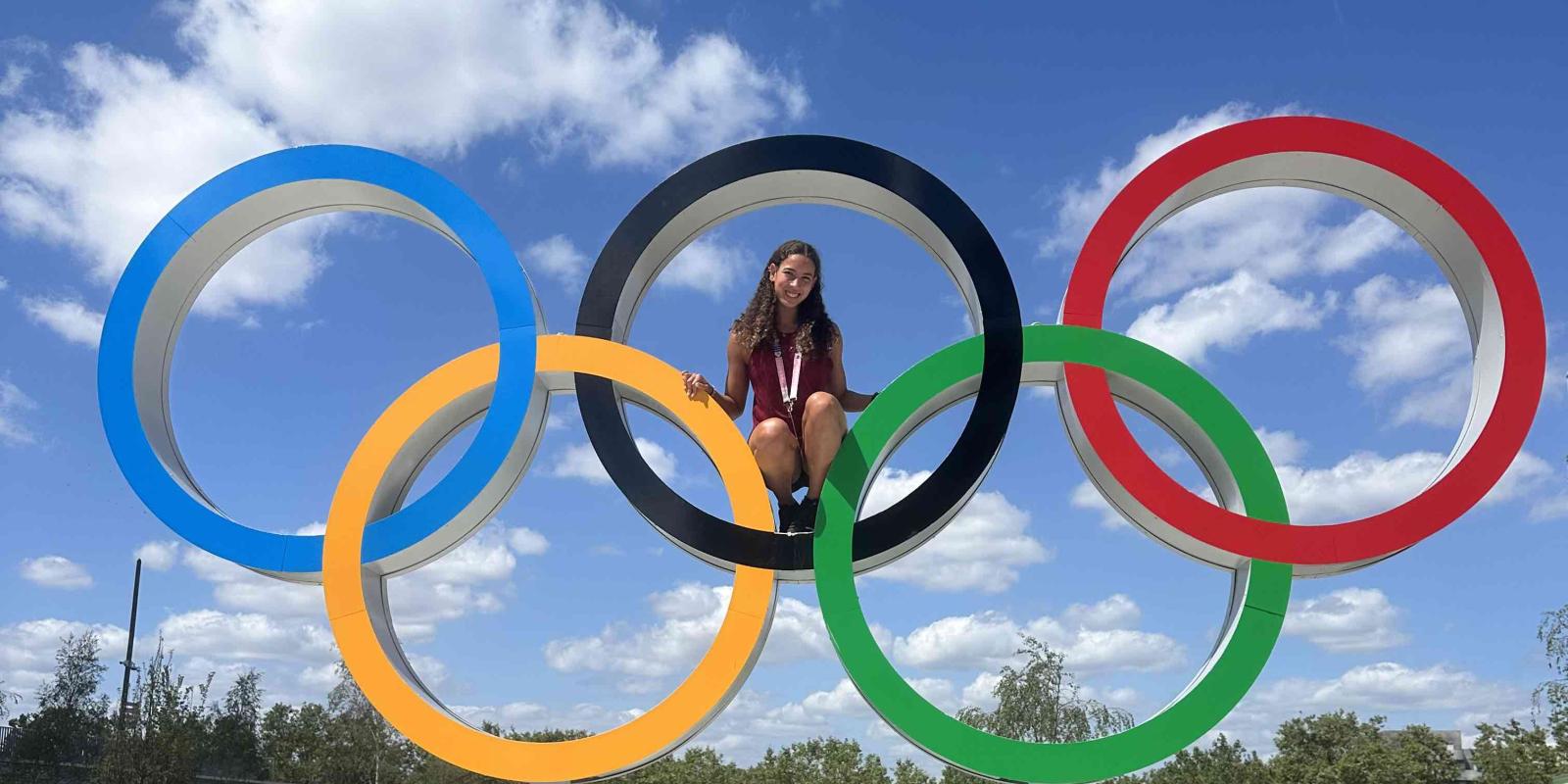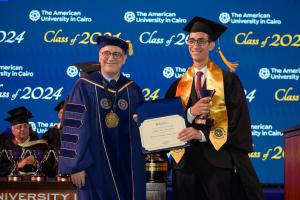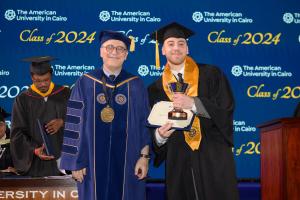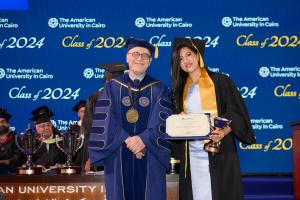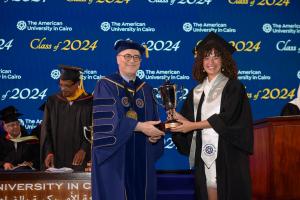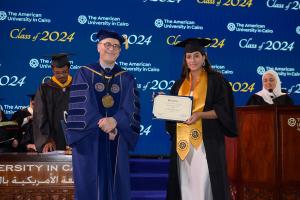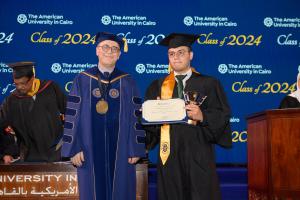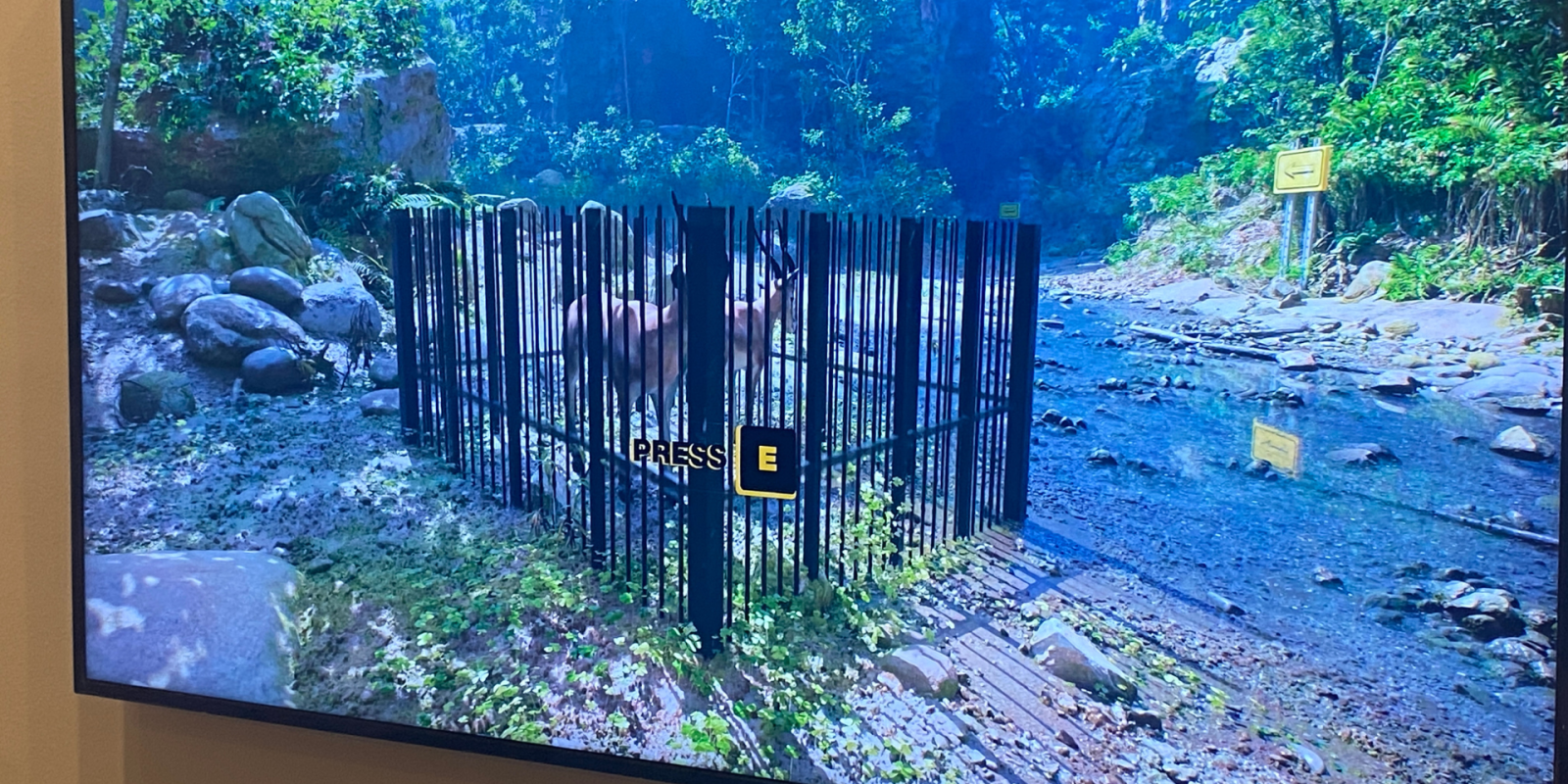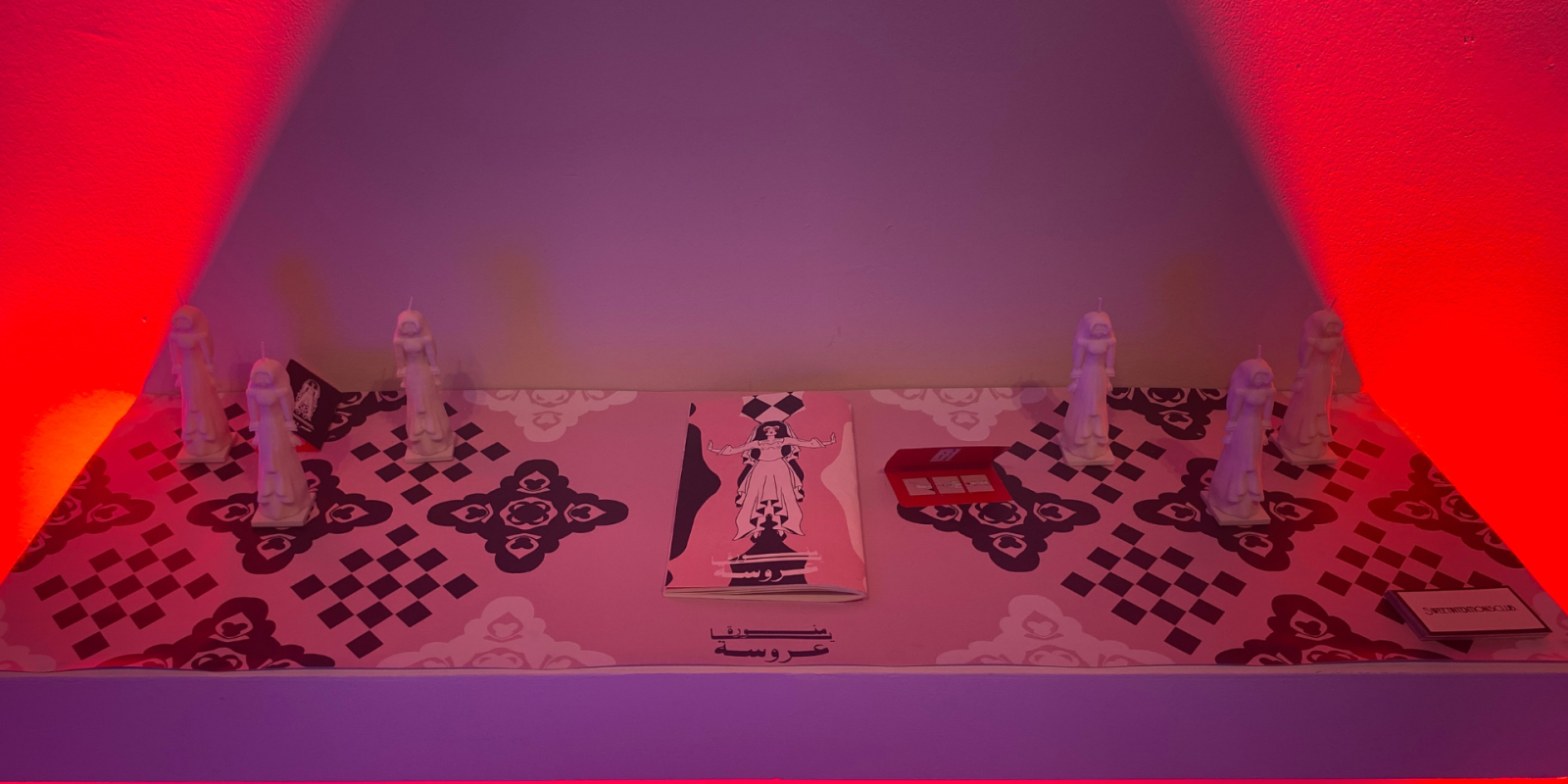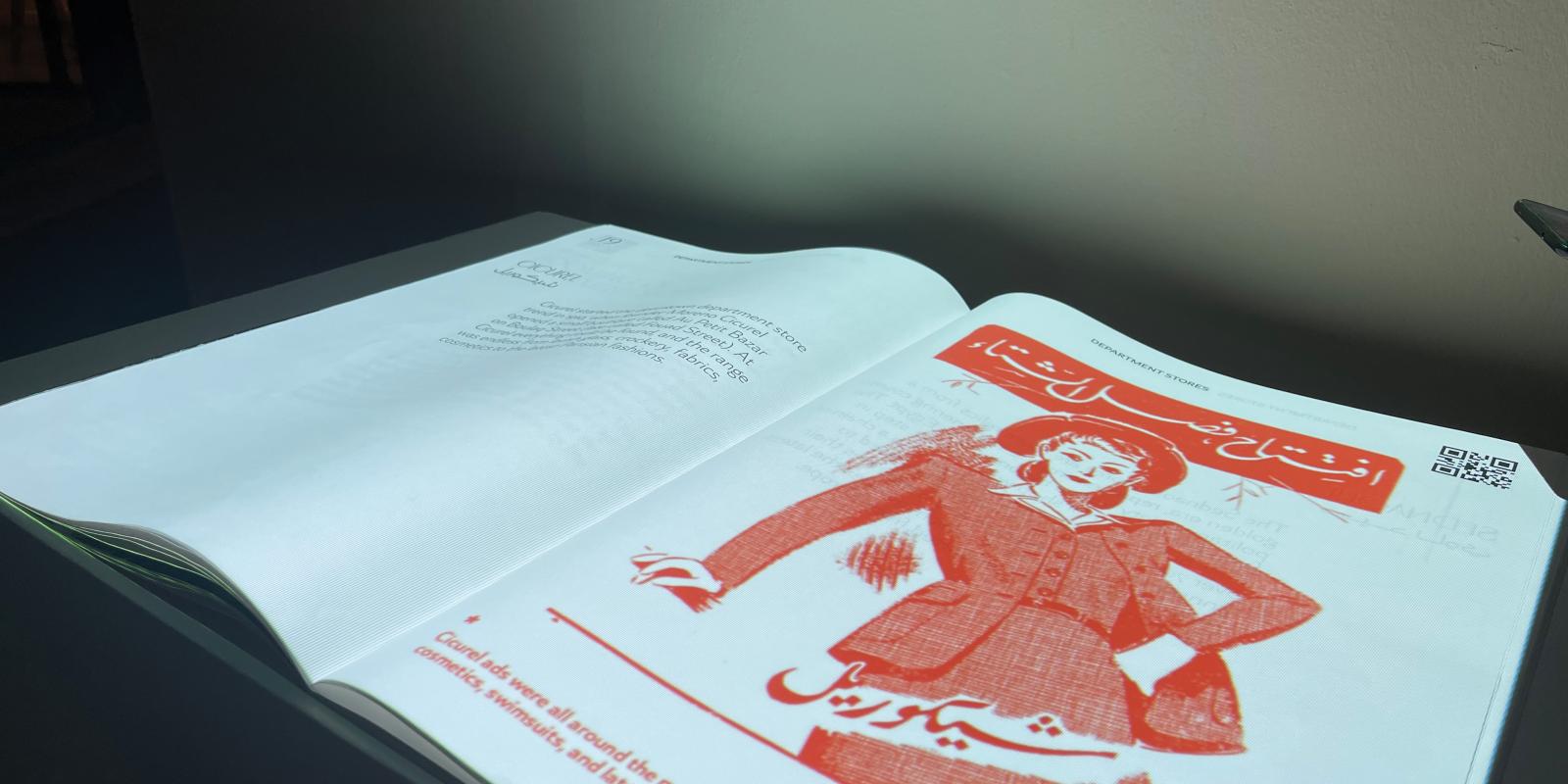AUC Olympians
Amina Elfeky, architecture sophomore
Artistic Swimming
Two-Time Olympian
Member of team that won Egypt's first World Cup silver medal in 2023
“Participating in the Olympics as an artistic swimmer has been a remarkable journey and a dream come true. Competing in Paris and performing in all the routines was both challenging and rewarding. The experience was more special because my family was there to watch and celebrate with me, adding a deeply personal touch to this achievement. Each Olympic experience has been unique, and performing on such a grand stage surrounded by loved ones is a moment I will always cherish and remember.
“Participating in the Olympics as an artistic swimmer has been a remarkable journey and a dream come true. Competing in Paris and performing in all the routines was both challenging and rewarding.”
News@AUC connected with some of the students and alumni who took part in the Paris 2024 Olympics, capturing their emotions and unforgettable experiences from the event.
I’ve learned the importance of discipline, perseverance and adaptability. These qualities allowed me to perform at my best in Paris, turning challenges into opportunities for growth and success.
My most memorable moment was after finishing my performances and hearing the whole crowd cheering for our team, while waiting to see our results and finding out that we swam a “base mark free routine” (which means a very good performance in the world of artistic swimming). This was a very satisfying feeling.”
I’ve learned the importance of discipline, perseverance and adaptability. These qualities allowed me to perform at my best in Paris, turning challenges into opportunities for growth and success.
Maggy Ashmawy ’13, political science
Shooting
Two-Time Olympian; Gold medalist in 2019 African Games and 2019 African Championship
“The Paris 2024 Olympics were different from Tokyo 2020 as there were spectators and cheering during all rounds of the competition. This did not happen in Tokyo because it was during Covid, and usually in world cups, the cheering is only at the finals. The cheering gave me positive vibes but was stressful sometimes. We learn new lessons every day, and I have definitely learned a lot from my experience in the Paris Olympics.”
“The cheering gave me positive vibes but was stressful sometimes.”
Dina Meshref ’17, business administration
Table Tennis
Four-Time Olympian; Ranks #24 worldwide and #1 in Africa; Won 14 African titles, including 1st in Africa nine times
“Being part of the Olympic Games is always very exciting and honorable. I feel very grateful to have been part of the Paris 2024 Olympics. One of the most valuable lessons I learned is to always enjoy competition and have fun during the game; and at the same time, stay very focused and give your 100% while preparing for the tournament and matches.
I have really enjoyed playing in Paris in front of the home crowd and all the spectators who attended. This time, the vibes and atmosphere were great and different compared to those at the Tokyo Olympics where no spectators were allowed due to Covid. I could feel how the French fans appreciate table tennis as a sport regardless of who wins in the end.”
“One of the most valuable lessons I learned is to always enjoy competition and have fun during the game; and at the same time, stay very focused and give your 100% while preparing for the tournament and matches.”
Yossra Helmy '20
Table Tennis
Three-Time Olympian
Helmy took part in the Rio 2016 Olympics as part of the Egyptian women’s team and the Tokyo 2020 Olympics, where she competed in the singles and women’s team games.
"I hope to be selected for the 2028 Olympics. Being in the Olympics several times gave me a big boost to keep doing it again as I become more familiar with the atmosphere and competition."
Other AUC Olympians at Paris 2024 Olympics
Malak Abdelshafi, mechanical engineering sophomore
Para Swimming
Best of luck to Abdelshafi, who will compete in the Paralympic Games from August 28 to September 8. Watch Abdelshafi speak about her AUC experience in the video below.
Abdelshafi won a silver medal at her first nationals when she was only 9 years old. She ranked 10th at the Tokyo 2020 Paralympic Games, where she broke the African record.

Mohammad Sanad ’14, economics
Handball
With a long career in handball, Sanad played on the Egyptian national team during the Rio 2016 Olympics and the World Men's Handball Championship in 2017, 2019 and 2021.

Haydy Morsy ’21, business administration
Modern Pentathlon (first reserve for Africa)
Four-Time Olympian
Morsy won first place at the 2019 Pentathlon African Championships and was captain of the women’s national team at the 2022 UIPM Modern Pentathlon World Cup. She was awarded First Prize Egyptian Athlete by Egypt’s President Abdel Fattah El-Sisi at the Aswan-Arab Youth Forum.

